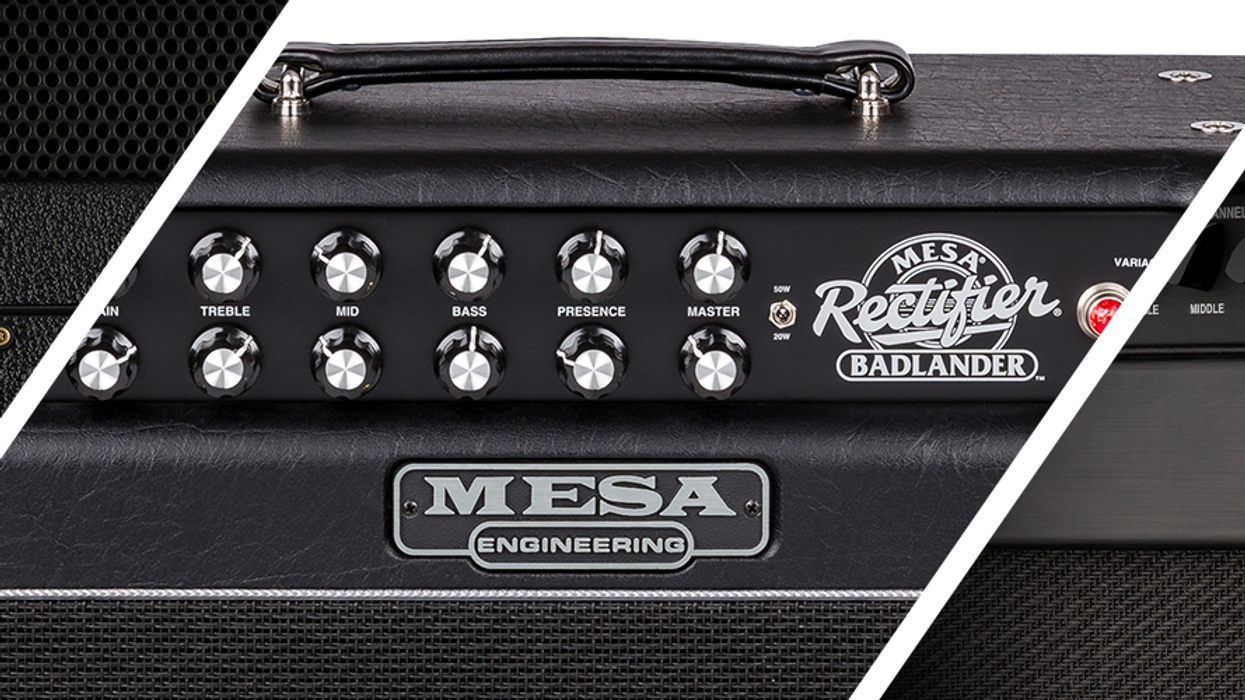Clip 1: Tele neck pickup, first with Mad Robot bypassed, then engaged with knob 1 at max, knob 2 at 9 o’clock, knob 3 at max, knob 5 at noon, and the toggle in the down position.
Clip 2: Tele neck pickup through Catalinbread Topanga, first with Mad Robot bypassed, then engaged with knob 1 at 3 o’clock, knob 2 at minimum, knob 3 at 8 o’clock, knob 5 at noon, and the toggle in the up position.
Clip 3: Eastwood neck pickup, first with Mad Robot bypassed, then engaged with knobs 1, 2, and 3 at noon, knob 5 at minimum, and the toggle in the up position.
RatingsPros:Gloriously gnarly, chaotic, and splatty tones perfect for everything from doom metal to MC5 mayhem, post-punk, and dysfunctional funk. Cons: Somewhat unpredictable operation. Unanchored interior perfboard could be cause for concern. Not adept at subtlety. Street: $130 MidValleyFx Mad Robot midvalleyfx.com | Tones: Ease of Use: Build/Design: Value: |
MidValleyFx’s Mad Robot fuzz is driven by silicon transistors and a 1n914 germanium diode. The manual calls knobs 1, 2, 3, and 5 output level, input gain, attack, and tone, respectively, while 4 is a toggle for engaging an octave-up oscillation circuit.
While fuzzy distinctions between knob functions certainly aren’t uncommon with deviant fuzzes, here their simplified descriptions often belie their practical effect: All four knobs tend to behave like gain controls of nebulous distinction—particularly with the octave circuit bypassed. Oh well—plug in and mess around, eh? With a humbucker-equipped Eastwood, multiple Mad Robot settings—all of them simultaneously corpulent, mid-heavy, and kind of unhinged sounding—immediately inspired angular, chaotic, atonal riffing … it felt wrong to play “normal.” In my book, that’s something to celebrate.
With a Tele, the MR’s sludgy tendencies breathed more and felt friendlier to chord work—though the pedal’s skwonky essence was still inescapable. Due to the difficulty of dialing out sometimes-harsh highs, I favored the neck pickup on both guitars, although adding a wah to the equation opened a world of soaring, fantastically searing/seething possibilities in all three positions. At times I wished octave mode’s oscillations were more prominent—they often pop out more when you’re not playing than when you are—but that unpredictability can also be part of the pedal’s anarchic charm.
Test gear: Eastwood Sidejack Baritone DLX with Curtis Novak Jazzmaster Widerange pickups, Squier Vintage Modified Tele with Curtis Novak Tel-V and JM-V pickups, MXR Reverb, Dunlop Cry Baby Mini 535Q wah, Jaguar HC50 and Fender Rumble 200 amps.








![Rig Rundown: Russian Circles’ Mike Sullivan [2025]](https://www.premierguitar.com/media-library/youtube.jpg?id=62303631&width=1245&height=700&quality=70&coordinates=0%2C0%2C0%2C0)

















